New Representation
Titus Kaphar
Gagosian is pleased to announce the representation of Titus Kaphar. A painter, sculptor, and filmmaker whose work addresses salient social and political concerns, Kaphar employs deconstructive techniques such as cutting, shredding, charring, and erasing, combining them with reconstructive acts such as stitching and binding to reexamine visual representation in Western art. Wielding the pictorial strategies of European classicists such as Diego Velázquez and Théodore Géricault in order to probe contested histories and colonialist legacies, he rewrites them into narratives of cultural empowerment. In his latest series of paintings, From a Tropical Space (2019–), Kaphar creates surreal, emotionally intense landscapes that are firmly rooted in the present. In conjunction with Kaphar’s representation by Gagosian, the gallery is also supporting NXTHVN (Next Haven), a nonprofit arts hub that the artist founded with Jason Price and Jonathan Brand in 2015 in the Dixwell neighborhood of New Haven, Connecticut.
#TitusKaphar

Titus Kaphar. Photo: Sasha Arutyunova
Related News
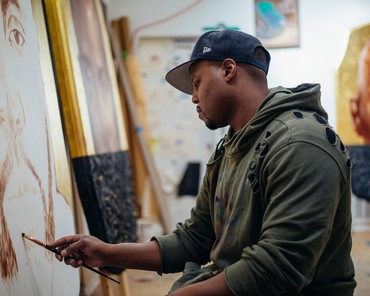
Honor
Titus Kaphar
Brooklyn Artists Ball 2024
Titus Kaphar is the honoree of the 2024 Brooklyn Artists Ball, taking place on April 9 in New York. Kaphar—a Brooklyn Museum trustee and cofounder and president of the nonprofit arts hub NXTHVN—was selected for his innumerable contributions as both a trailblazing artist and a community-focused activist. The Artists Ball is the museum’s largest fundraiser, generating pivotal revenue in support of programming that spans special exhibitions and reimagined collection installations as well as educational programs for visitors of all ages.
Titus Kaphar. Photo: Sasha Arutyunova/The New York Times/Redux

Screening and Talk
Titus Kaphar
Derek Cianfrance
Friday, April 28, 2023, 7pm
Metrograph, New York
metrograph.com
Join Titus Kaphar and director Derek Cianfrance on the opening night of Titus Kaphar Selects, a film program curated by the artist as part of a series copresented by Gagosian and Metrograph. The evening will include screenings of Kaphar’s short films Shut Up and Paint, an Oscar-shortlisted work in which he looks to the medium of film in the face of an insatiable art market seeking to silence his activism, and I Hold Your Love, a New Yorker documentary that explores the joys and injustices of Black motherhood. Following the screenings, the pair will speak about their respective practices and work, including Cianfrance’s 2010 film Blue Valentine, which also features in the program.
Still from Shut Up and Paint (2022), directed by Titus Kaphar and Alex Mallis
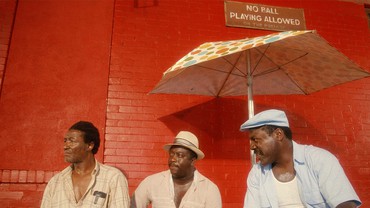
Screening
Titus Kaphar Selects
April 28–May 11, 2023
Metrograph, New York
metrograph.com
Titus Kaphar has curated a selection of films as part of a series copresented by Gagosian and Metrograph. The program features seven films that have each served to validate feelings of joy, pain, fear, or sorrow for the artist, as well as two short films that he directed.
Kaphar explains, “Film is a uniquely powerful medium. Its ability to tap into our emotions is unlike anything else for me. This is not a top ten list. This is a decidedly subjective selection of films that, through their vulnerability and specificity, have made me feel less alone.”
Featured films include
The Babadook
Blue Valentine
Boyz n the Hood
Do the Right Thing
Drive My Car
I Hold Your Love
The Last Black Man in San Francisco
Moonlight
Shut Up and Paint
Still from Do the Right Thing (1989), directed by Spike Lee
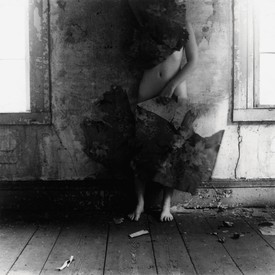
Francesca Woodman
Ahead of the first exhibition of Francesca Woodman’s photographs at Gagosian, director Putri Tan speaks with historian and curator Corey Keller about new insights into the artist’s work. The two unravel themes of the body, space, architecture, and ambiguity.
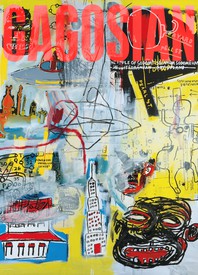
Now available
Gagosian Quarterly Spring 2024
The Spring 2024 issue of Gagosian Quarterly is now available with a fresh cover design featuring Jean-Michel Basquiat’s Lead Plate with Hole (1984).

Sofia Coppola: Archive
MACK recently published Sofia Coppola: Archive 1999–2023, the first publication to chronicle Coppola’s entire body of work in cinema. Comprised of the filmmaker’s personal photographs, developmental materials, drafted and annotated scripts, collages, and unseen behind-the-scenes photography from all of her films, the monograph offers readers an intimate look into the process behind these films.

Adaptability
Adam Dalva looks at recent films born from short stories by the Japanese writer Haruki Murakami and asks, What makes a great adaptation? He considers how the beloved surrealist’s prose particularly lends itself to cinematic interpretation.

Not Running, Just Going
Robert M. Rubin’s Vanishing Point Forever (RideWithBob/Film Desk Books, 2024) explores the production, reception, and lasting influence of Richard Sarafian’s 1971 film. In this excerpt, Rubin discusses the pseudonymous screenwriter Guillermo Cain (Guillermo Cabrera Infante), the famous Kowalski car, and how a nude hippie biker chick became the Lady Godiva of the internal combustion engine.
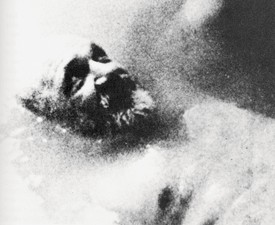
On Frederick Wiseman
Carlos Valladares writes on the life and work of the legendary American filmmaker and documentarian.

You Don’t Buy Poetry at the Airport: John Klacsmann and Raymond Foye
Since 2012, John Klacsmann has held the role of archivist at Anthology Film Archives, where he oversees the preservation and restoration of experimental films. Here he speaks with Raymond Foye about the technical necessities, the threats to the craft, and the soul of analogue film.

Whit Stillman
In celebration of the monograph Whit Stillman: Not So Long Ago (Fireflies Press, 2023), Carlos Valladares chats with the filmmaker about his early life and influences.

Lisa Lyon
Fiona Duncan pays homage to the unprecedented, and underappreciated, life and work of Lisa Lyon.
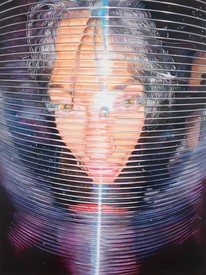
Jamian Juliano-Villani and Jordan Wolfson
Ahead of her forthcoming exhibition in New York, Jamian Juliano-Villani speaks with Jordan Wolfson about her approach to painting and what she has learned from running her own gallery, O’Flaherty’s.
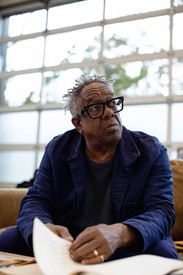
Stanley Whitney: Vibrations of the Day
Stanley Whitney invited professor and musician-biographer John Szwed to his studio on Long Island, New York, as he prepared for an upcoming survey at the Buffalo AKG Art Museum to discuss the resonances between painting and jazz.

Game Changer: Alexey Brodovitch
Gerry Badger reflects on the persistent influence of the graphic designer and photographer Alexey Brodovitch, the subject of an upcoming exhibition at the Barnes Foundation, Philadelphia.